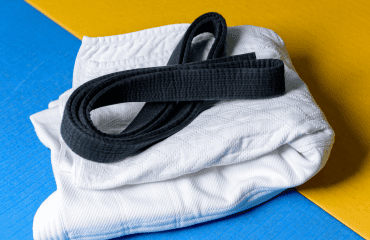
In martial arts, judo belts capture the very essence of a practitioner’s growth and progress. At NOCO Jiu Jitsu and Self Defense, these belts hold significant value, representing the dedication and perseverance that each student pours into their training. But why exactly are judo belts so important? Let’s explore the world of judo belts and uncover what makes them essential to the learning experience.
What Do Judo Belts Represent in Martial Arts?
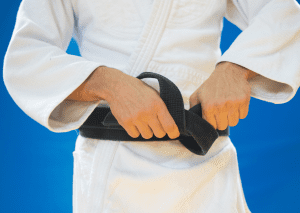
The symbolic colors and ranks of judo belts provide a visual roadmap for a practitioner’s development. Starting from the white belt, which symbolizes the beginning of one’s martial arts adventure, and progressing through the other colors to reach the black belt, each rank marks a stage of growth, skill, and understanding.
These belts aren’t just a status symbol but a testament to the effort and time each practitioner puts into honing their craft. They signify the mastery of techniques, understanding of principles, and, most importantly, the mental and physical discipline required to succeed. They also offer guidance for students, helping them stay motivated and set achievable goals as they progress through different belt levels.
How Are Judo Belts Earned at Judo Schools?
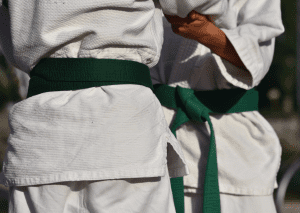
Progressing through the ranks involves more than just demonstrating technical ability. Students are expected to meet various criteria, including their dedication to training, understanding of the principles behind the techniques, and how well they uphold the values of the discipline.
The assessment process often involves rigorous testing where students showcase their skills before their peers and instructors. This culminates in ceremonies where successful candidates are awarded their next belt in recognition of their achievements. This tradition fosters camaraderie and community support, making each belt earn a shared victory among fellow students and coaches.
| Criteria | Description |
| Technical Ability | Demonstrating proficiency in the required techniques at each belt level. |
| Dedication to Training | Regular attendance, consistent effort, and application during training sessions. |
| Principles and Values | Displaying respect, humility, and sportsmanship in alignment with judo principles. |
| Testing Process | Passing rigorous testing that includes demonstration and sparring components. |
| Ceremonies | Participating in ceremonies that celebrate student progress and recognize achievements. |
Does Belts Matter in Judo?

Judo belts significantly influence training focus and motivation among practitioners. They establish a clear structure and provide tangible goals for students, encouraging them to push through challenges and achieve higher ranks. For beginners, the pursuit of a yellow or orange belt can ignite their passion and inspire them to work hard, while advanced practitioners find fulfillment in mastering more intricate techniques.
In competition, belts are equally important. They ensure fair matchups by categorizing opponents based on their skill level. Within the training context, belts guide sparring partners in adjusting their intensity to challenge each other without overwhelming less experienced students.
How Do Judo Belts Enhance Training and Learning?

Each judo belt color dictates a unique learning curriculum, ensuring that students are taught techniques appropriate for their skill level. For instance, white belts focus on fundamental movements and safety protocols, while green belts dive into more advanced grappling and throwing techniques. This structured approach helps students build a solid foundation before moving on to complex maneuvers.
Sparring challenges also vary at different belt levels. Higher belts introduce students to situations requiring greater adaptability and creativity, pushing them to refine their technique. As they progress, students can experiment with various strategies and find their unique style.
What Challenges Come with Each Judo Belt Level?
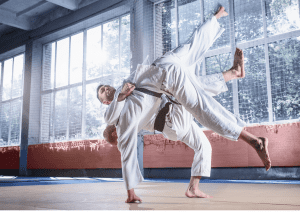
Progressing through judo belts is not without its challenges. White belts may struggle with mastering the basics, as simple movements can initially feel awkward or difficult. As students move up the ranks, their challenges become more technical, such as perfecting timing and balance or executing complex throws.
At higher levels, students also face mental challenges like overcoming self-doubt or maintaining motivation. The key lies in understanding that each belt level presents unique hurdles that must be faced with resilience and a willingness to learn.
How Does NOCO Jiu Jitsu Support Progress Through the Belt System?

NOCO Jiu Jitsu provides comprehensive support to help students reach their next belt. Coaching and mentoring form the core of this support system, with experienced instructors offering personalized guidance and actionable feedback.
Training programs are tailored to suit different skill levels, ensuring that each student gets the right mix of instruction and challenge. The school’s community-driven approach fosters a sense of camaraderie, where advanced students mentor beginners, and everyone celebrates each other’s successes.
What Are the Psychological Benefits of Earning Judo Belts?

Earning judo belts significantly impacts the psychological growth of practitioners. The sense of achievement that comes with each promotion boosts confidence and nurtures perseverance. Students learn to accept failure as part of growth and develop the resilience to push through setbacks.
The belt system also instills respect for others, as each practitioner understands the effort required to reach a particular level. It builds humility and camaraderie among students, creating a supportive environment where they celebrate progress together.
- Boosts confidence: Achieving new belt ranks fosters a sense of accomplishment.
- Nurtures perseverance: Students develop resilience through challenges and setbacks.
- Instills respect: Understanding the effort needed to progress builds mutual respect.
- Fosters camaraderie: Students support each other, creating a positive learning
How to Prepare for Belt Testing and Advancement?
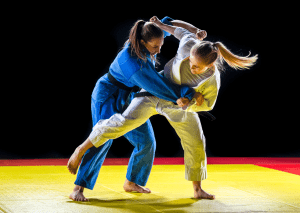
Preparation for belt testing requires dedication and strategic planning. Regular training is essential, but it’s equally important to focus on the specific techniques and principles assessed at each belt level. Students should seek guidance from their instructors, practice diligently, and work on any weaknesses in their technique.
NOCO Jiu Jitsu instructors often share valuable advice for excelling in exams. This includes staying consistent with training, studying techniques from various perspectives, and understanding the broader principles behind each movement.
- Practice regularly to build consistency in your techniques.
- Seek personalized feedback from instructors to identify areas for improvement.
- Focus on the techniques and principles assessed at your current belt level.
- Work on overcoming any weaknesses and refining your strengths.
- Stay motivated by studying techniques from various perspectives and contexts.
Why Should You Train at NOCO Jiu Jitsu and Self Defense?

NOCO Jiu Jitsu offers a comprehensive training experience that helps students earn judo belts while becoming well-rounded martial artists. With expert instructors, personalized coaching, and a supportive community, the school creates an ideal environment for anyone serious about judo. Whether you’re a beginner seeking your first belt or a seasoned practitioner working toward higher ranks, there’s always something new to learn and achieve.
Ready to start your martial arts adventure with NOCO Jiu Jitsu? Sign up for a trial class today and immerse yourself in the fascinating world of judo belts.
Judo belts play a crucial role in shaping a practitioner’s growth and progress. At NOCO Jiu Jitsu and Self Defense, the belt system encourages discipline, commitment, and mastery. We believe that structured progression is vital to realizing your full potential, and our supportive community is here to help every student thrive. Start your adventure today and discover the profound impact of earning judo belts with NOCO Jiu Jitsu and Self Defense.
Frequently Asked Questions:
- What do judo belts represent in martial arts?
Judo belts represent the different stages of a practitioner’s growth, skill development, and understanding. They provide a visual roadmap of progress, with each color signifying a new level of mastery achieved.
- How are judo belts earned at NOCO Jiu Jitsu?
Students earn new belts by demonstrating proficiency in required techniques, dedication to training, understanding of principles and values, passing rigorous testing, and participating in promotion ceremonies.
- Why do belts matter in judo training and competition?
Belts provide tangible goals to motivate students, ensure fair matchups by categorizing opponents’ skill levels, and guide appropriate training intensity when students spar with different belt levels.
- How do judo belts enhance the learning process?
Each belt has a tailored curriculum focusing on techniques suitable for that skill level. This structured approach builds a solid foundation before advancing to more complex maneuvers. Higher belts also face greater sparring challenges to improve adaptability.
- What kind of support does NOCO Jiu Jitsu provide for belt progression?
NOCO Jiu Jitsu offers personalized coaching, tailored training programs for each level, a community-driven approach where advanced students mentor beginners, and a supportive environment that celebrates everyone’s successes.
